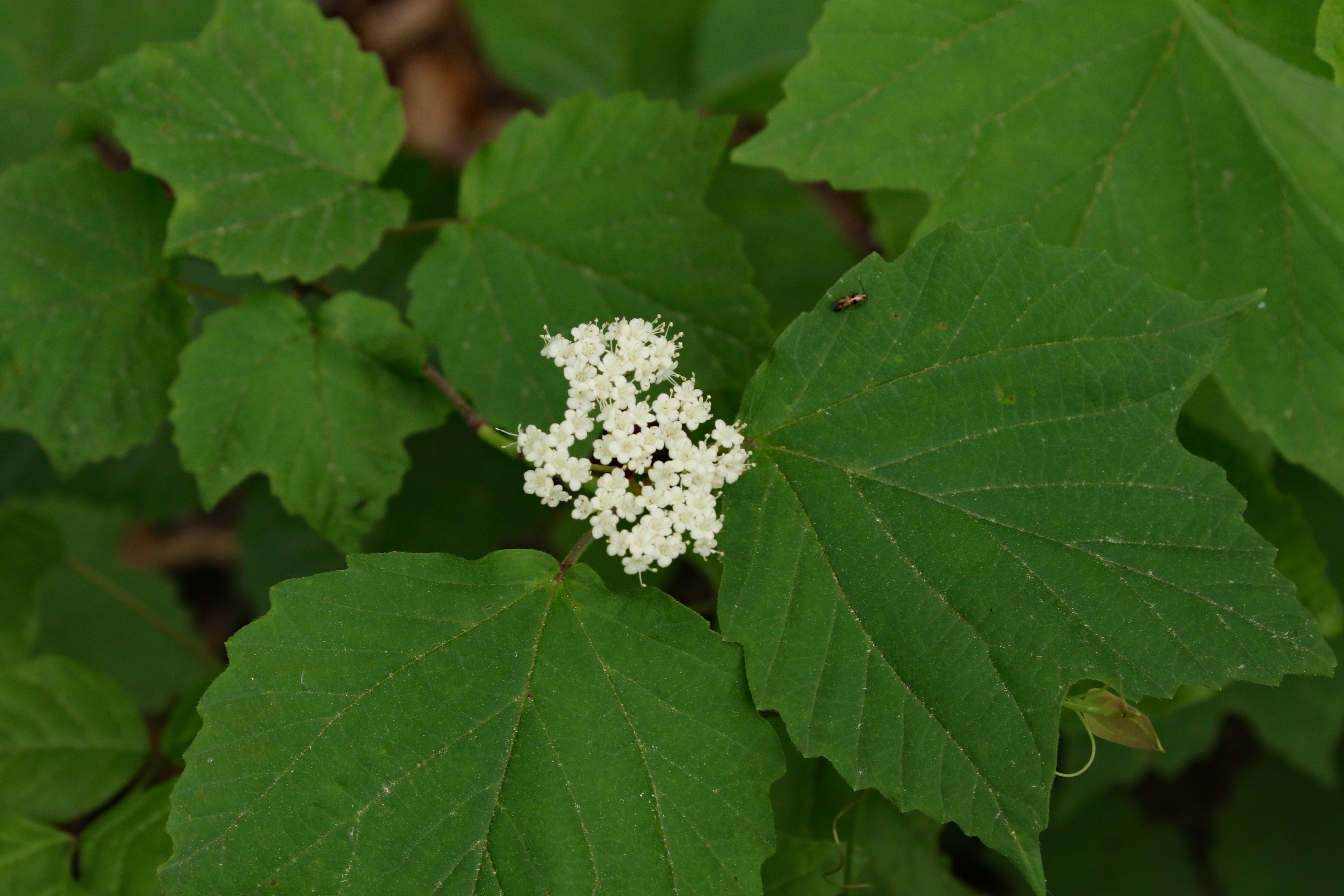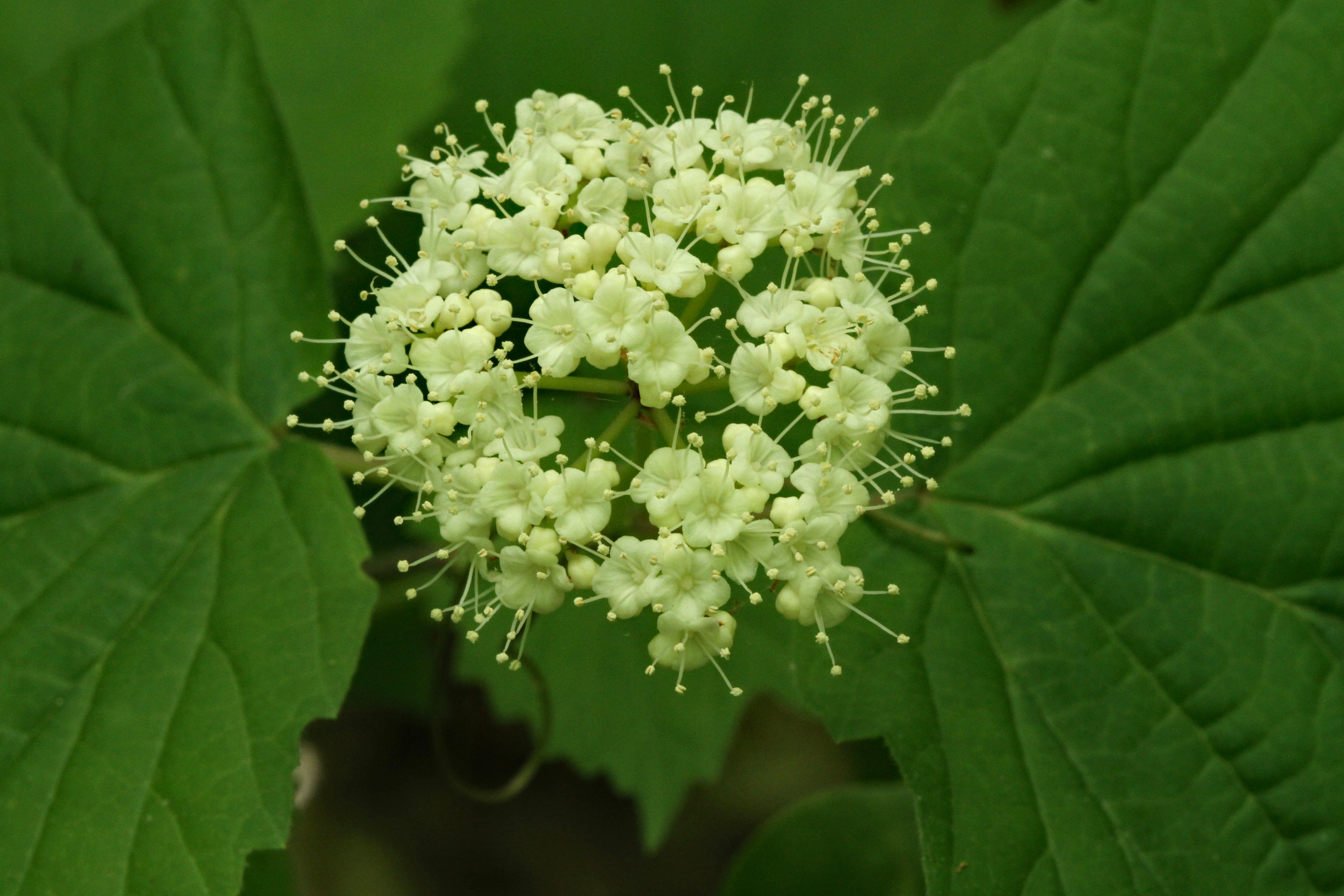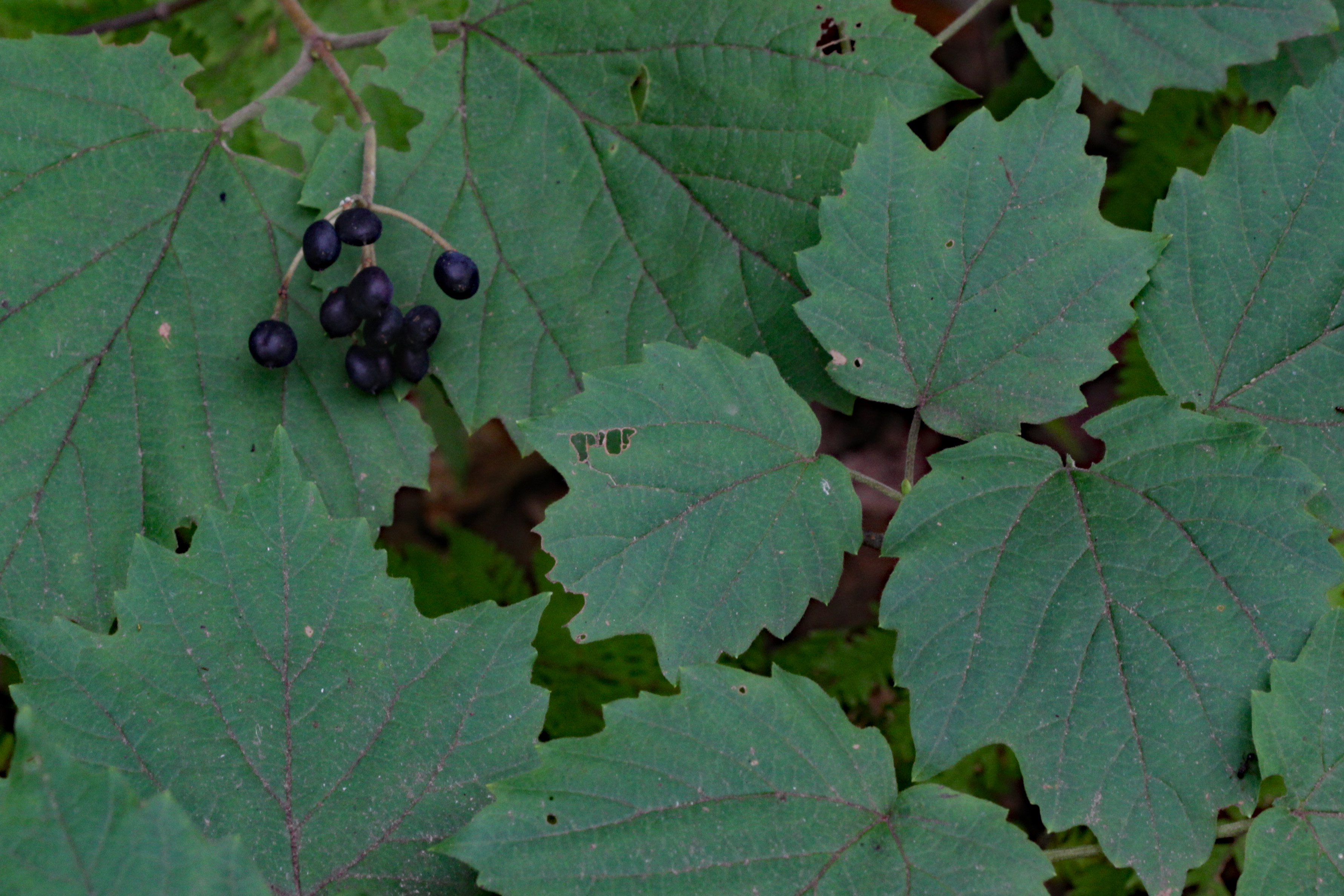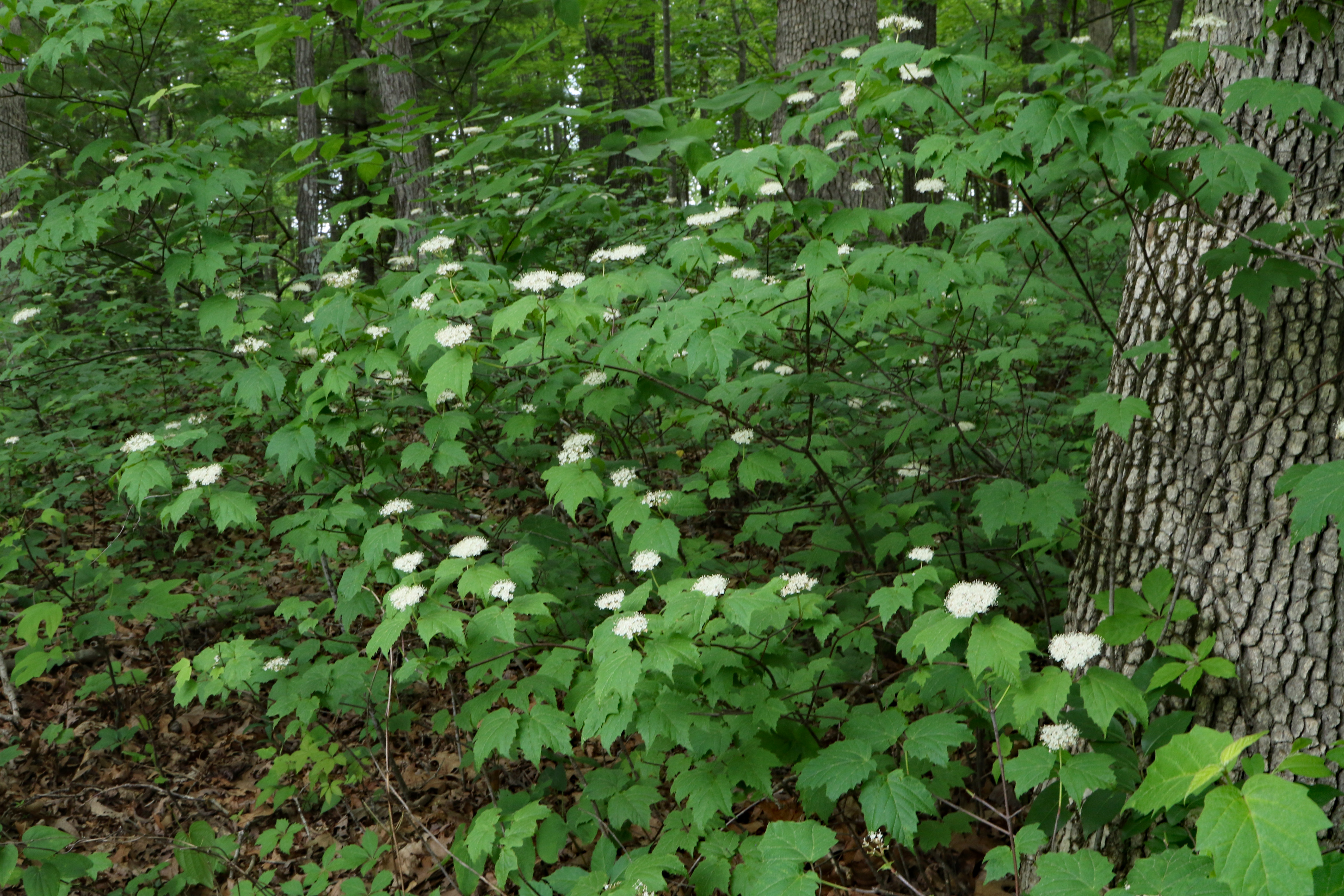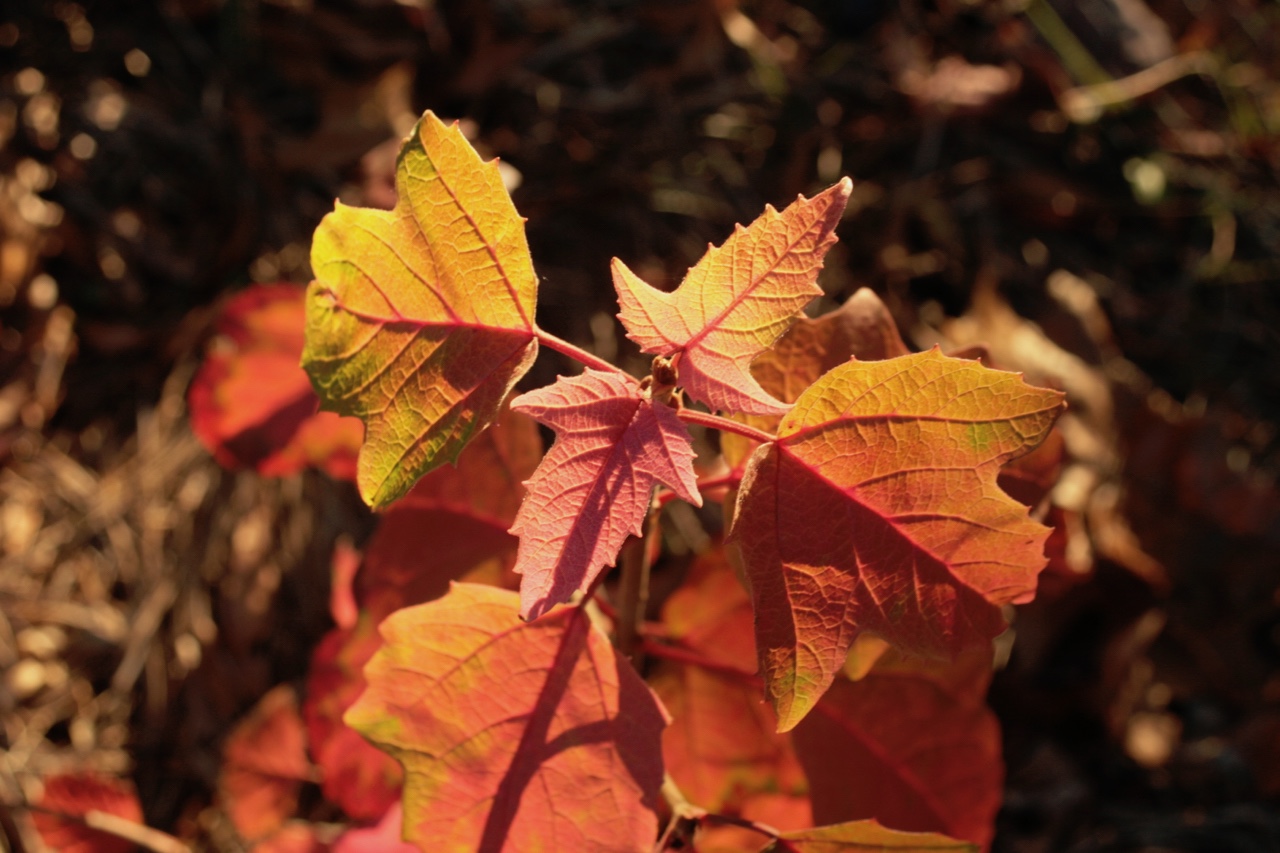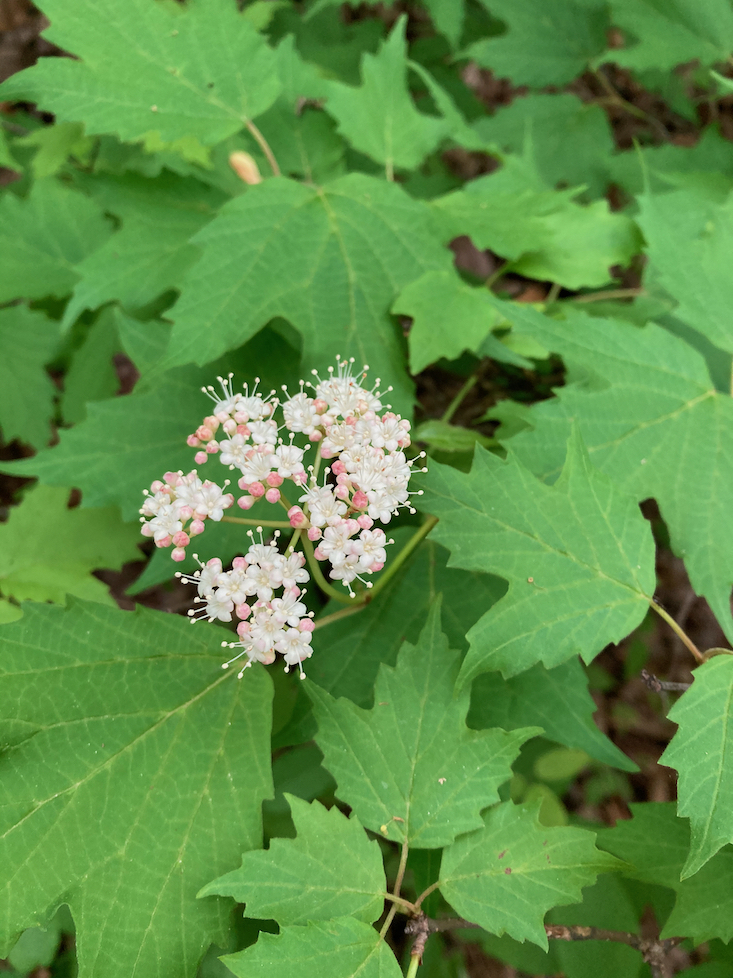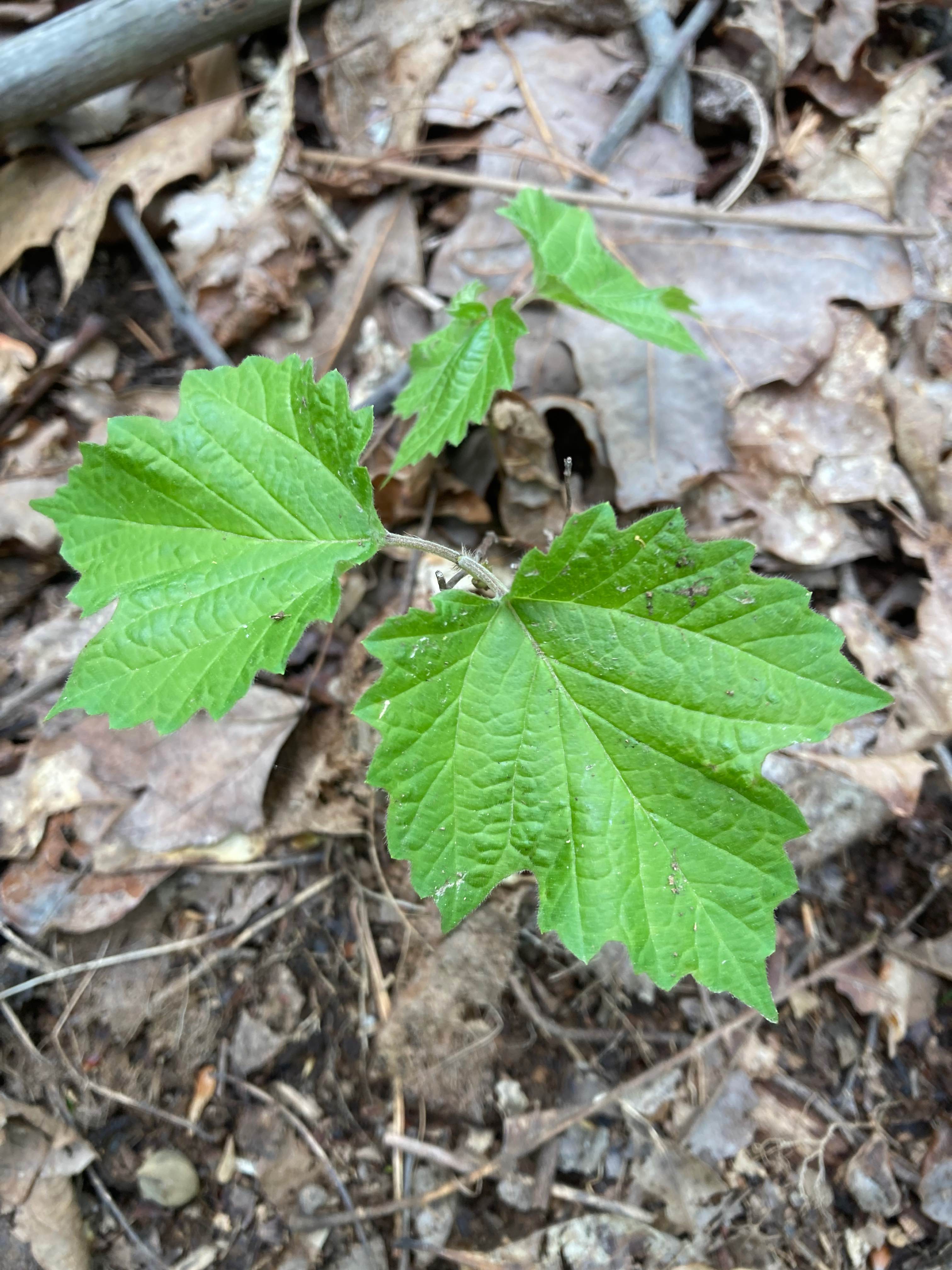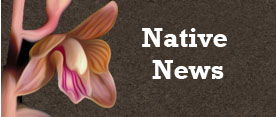NC Native Plant Society:
Plant Details
Viburnum acerifolium
Mapleleaf Viburnum, Maple-leaved Viburnum, Dockmackie
Scientific Name: |
Viburnum acerifolium |
|---|---|
Genus: |
Viburnum |
Species Epithet: |
acerifolium |
Common Name: |
Mapleleaf Viburnum, Maple-leaved Viburnum, Dockmackie |
Plant Type |
Shrub |
Life Cycle |
Perennial |
Plant Family |
Viburnaceae (Viburnum Family) |
Native/Alien: |
NC Native |
Invasive Status: |
(*Key) |
Size: |
1-3 ft., 3-6 ft. |
Bloom Color(s): |
White |
Light: |
Part Shade - 2 to 6 hours of sun per day |
Soil Moisture: |
Dry, Moist |
Bloom Time: |
April, May, June |
Growing Area: |
Mountains, Piedmont |
Habitat Description: |
Mesic to dry forests and woodlands. Common and widespread in the NC mountains and the western and central Piedmont; fairly common to frequent in the eastern Piedmont, except rare to uncommon in the northeasternmost Piedmont counties. |
Leaf Arrangement: |
Opposite |
Leaf Retention: |
Deciduous |
Leaf Type: |
Leaves veined, not needle-like or scale-like |
Leaf Form: |
Simple |
Life Cycle: |
Perennial |
Wildlife Value: |
Important for Wildlife |
Landscape Value: |
Highly Recommended and Available |
State Rank: |
S5: Secure (*Key) |
Global Rank: |
G5 - Secure (*Key) |
Notes: |
Nice Fall color. |
|
Flowers in terminal, slightly rounded cymes develop from young branches surrounded by palmately veined, three lobed, maple-like, paired leaves.
Will Stuart |
|
|
Bright-white blossoms have 5 small fused petals with 5 conspicuous protuding stamens.
Will Stuart |
|
|
Dark purple fruits mature in late summer.
Will Stuart |
|
|
Shrubs are generally 1 to 2 meters, forming colonies via suckering in suitable habitat. This scene from the Smart View Recreation Area along the Blue Ridge Parkway in Virginia
Will Stuart |
|
|
Flower buds garden in Orange County, NC
Bettina Darveaux |
|
|
Nice Fall color garden in Orange County, NC
Bettina Darveaux |
|
|
Inflorescence with white fully opened flowers and pinkish-colored buds makes a beautiful combination. Macon County, NC
Bettina Darveaux |
|
|
A young sapling. Panther Branch Natural Area, Orange Co., NC
Bettina Darveaux |
|
Links: |
|
back to top
go to plant details search
go to plant images search
go to gallery home
back to Initial v Gallery
back to orchids
back to Carnivorous Plants
back to Trilliums

